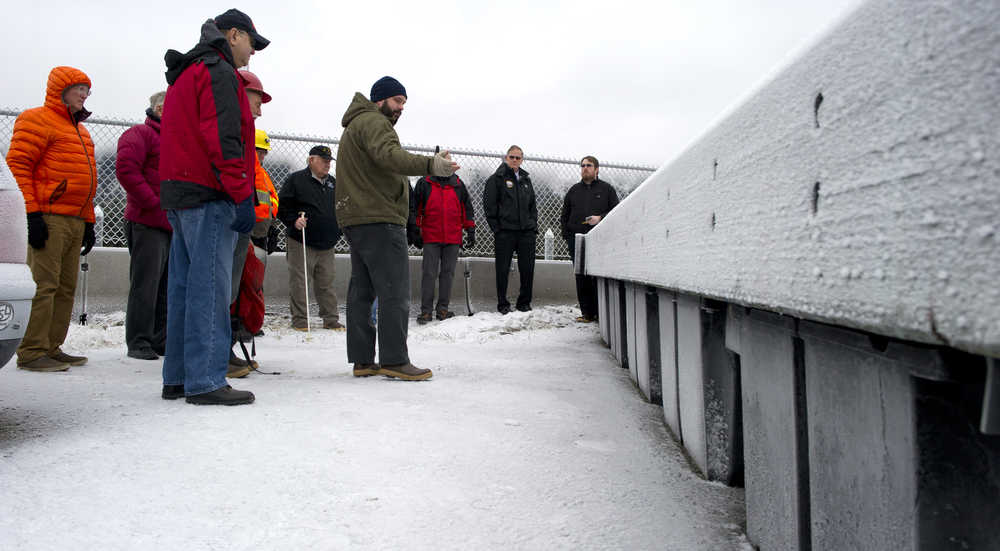Sometime in the next few weeks, Matthew Sill of PND Engineers expects someone to look into Douglas Harbor and ask a simple question: When can I move in?
“It looks complete, but the utilities really do take some time,” he said Wednesday afternoon.
The City and Borough of Juneau Docks and Harbors Department hosted a brief tour of the renovations underway at the Douglas Boat Harbor. Port Director Carl Uchytil said the work is about “85 percent complete” and is expected to finish before its March 31 deadline.
That completion will be a big relief to the City and Borough, which has spent almost two decades researching, planning, permitting and fixing the harbor first completed in the early 1960s.
The new section of Douglas Harbor (A, B and C floats are being replaced; some remained untouched during the project) will include the same number of boat slips (about 120) as the old section, but it will be more durable, easier to maintain, and more friendly to harbor users, Uchytil said.
“We had numerous floats that ran aground at low tide,” Uchytil said of the old facility. “It was just time; it was well past its useful life.”
The beginnings of Douglas’ harbor date to World War II, but it wasn’t until the 1960s, after the construction of a causeway to Juneau Island, a new breakwater, and dredging by the U.S. Army Corps of Engineers, that the harbor came into being.
The CBJ’s docks and harbors department is run as an enterprise fund — it’s supposed to pay for itself via user fees. In the 2000s, after years of planning, it started issuing bonds to prepare for the project. In 2008, it received a $2 million grant from the state.
Construction had to wait until permitting, which didn’t come until June 2014 from the Corps of Engineers.
After the permit, federal funding paid for the Corps to dredge the harbor, something needed because Juneau’s seabed is still rebounding after the melting of the area’s glaciers.
In the past 20 years, said deputy port engineer Erich Schaal, the seafloor in the harbor had risen a foot to a foot and a half, a process called “isostatic rebound.”
After the dredging, the ports department issue a $6 million construction contract to Trucano Construction.
Doug Trucano, the owner of the firm, called the job “fairly straightforward.”
“We basically build these docks with four people,” he said of the floats.
That figure doesn’t include electricians and plumbers from subcontractors.
One headache on the project has come from two pilings that couldn’t be pounded deep enough with a hammer. Trucano plans to bring in a drill to break through the clay or rock preventing the pilings from sinking deeper.
“We’ll be done with the main dock installation, I would say, in about a month,” Trucano said, though plumbers and electricians will be working longer.
One of the main differences from the old harbor and the new one is the extension of a headwall on the landward side of the harbor. That wall, backed by fill, will create additional parking in the harbor area and allow a second, improved ramp to be built to the floats. That ramp will be recycled from a renovated cruise ship dock.
Schaal said the work in Douglas is “well ahead of schedule” and may finish even before the March 31 contractual deadline.
“We’re really pleased with where Trucano Construction is,” Uchytil said.

